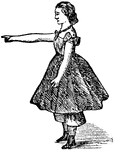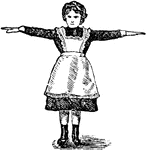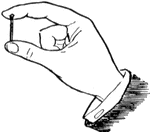
Vocalized Shut Back Consonant
Consonants have a closed or narrowly expanded adjustment of the vocal organs, so that in their production…

Vocalized Shut Lip Consonant
Consonants have a closed or narrowly expanded adjustment of the vocal organs, so that in their production…

Vocalized Shut Point Consonant
Consonants have a closed or narrowly expanded adjustment of the vocal organs, so that in their production…
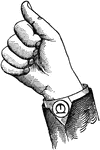
Vocalized Shut Top Consonant
Consonants have a closed or narrowly expanded adjustment of the vocal organs, so that in their production…

Explanatory Diagram
1) The first or index finger. 2) The second or middle finger. 3) The third finger. 4) The fourth finger.…
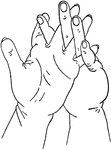
Intertwined fingers
A pair of hands with palms facing outwards and intertwined fingers pointing upwards.

Back-Glide
Glides are only transitional sounds. They are intermediate to Consonants and Vowels, combining the characteristics…

Back Mixed-Glide
Glides are only transitional sounds. They are intermediate to Consonants and Vowels, combining the characteristics…
![Glides are only transitional sounds. They are intermediate to Consonants and Vowels, combining the characteristics of certain central-aperture consonants with the wide or expanded quality of vowels, but differing from vowels in not having a fixed configuration. ...in representing glides the peculiarities of consonants and vowels are blended: the accented fingers, by being straightened, contribute a consonant characteristic; while the second phalanx of the thumb, by being held at an angle to the plane of the palm, imparts to the glide positions the wide, without giving them the firm, quality of vowel positions. <p> Breath-Glide - A transitional aspiration, of organic quality corresponding to that of the adjoining elements [a soft effect of the Consonants, back primary; top primary; Point primary; Lip primary; etc.]. Although this glide has no fixed abiding place, and is of a somewhat variable organic formation, in its effect it is very closely allied to the Throat consonant aspirate, and is therefore represented with a posterior position of the palm and a separation of the index and center fingers, which are characteristic features of Throat positions. This is the only Non-Vocal glide, and hence is the only one in the representation of which the voice phalanx is unaccented.](https://etc.usf.edu/clipart/65900/65914/65914_glide_breath_mth.gif)
Breath-Glide
Glides are only transitional sounds. They are intermediate to Consonants and Vowels, combining the characteristics…
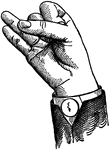
Indicated High Primary Back Glide
Glides are only transitional sounds. They are intermediate to Consonants and Vowels, combining the characteristics…

Indicated High Primary Lip Glide
Glides are only transitional sounds. They are intermediate to Consonants and Vowels, combining the characteristics…

Indicated High Primary Point Glide
Glides are only transitional sounds. They are intermediate to Consonants and Vowels, combining the characteristics…

Indicated High Primary Top Glide
Glides are only transitional sounds. They are intermediate to Consonants and Vowels, combining the characteristics…

Indicated High Wide Back Glide
Glides are only transitional sounds. They are intermediate to Consonants and Vowels, combining the characteristics…

Indicated High Wide Lip Glide
Glides are only transitional sounds. They are intermediate to Consonants and Vowels, combining the characteristics…

Indicated High Wide Point Glide
Glides are only transitional sounds. They are intermediate to Consonants and Vowels, combining the characteristics…

Indicated High Wide Top Glide
Glides are only transitional sounds. They are intermediate to Consonants and Vowels, combining the characteristics…

Indicated Low Primary Back Glide
Glides are only transitional sounds. They are intermediate to Consonants and Vowels, combining the characteristics…

Indicated Low Primary Lip Glide
Glides are only transitional sounds. They are intermediate to Consonants and Vowels, combining the characteristics…

Indicated Low Primary Point Glide
Glides are only transitional sounds. They are intermediate to Consonants and Vowels, combining the characteristics…

Indicated Low Primary Top Glide
Glides are only transitional sounds. They are intermediate to Consonants and Vowels, combining the characteristics…

Indicated Low Wide Back Glide
Glides are only transitional sounds. They are intermediate to Consonants and Vowels, combining the characteristics…
Indicated Low Wide Lip Glide
Glides are only transitional sounds. They are intermediate to Consonants and Vowels, combining the characteristics…

Indicated Low Wide Point Glide
Glides are only transitional sounds. They are intermediate to Consonants and Vowels, combining the characteristics…

Indicated Low Wide Top Glide
Glides are only transitional sounds. They are intermediate to Consonants and Vowels, combining the characteristics…
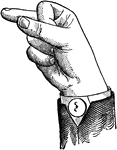
Indicated Mid Primary Back Glide
Glides are only transitional sounds. They are intermediate to Consonants and Vowels, combining the characteristics…

Indicated Mid Primary Lip Glide
Glides are only transitional sounds. They are intermediate to Consonants and Vowels, combining the characteristics…

Indicated Mid Primary Point Glide
Glides are only transitional sounds. They are intermediate to Consonants and Vowels, combining the characteristics…

Indicated Mid Primary Top Glide
Glides are only transitional sounds. They are intermediate to Consonants and Vowels, combining the characteristics…

Indicated Mid Wide Back Glide
Glides are only transitional sounds. They are intermediate to Consonants and Vowels, combining the characteristics…

Indicated Mid Wide Lip Glide
Glides are only transitional sounds. They are intermediate to Consonants and Vowels, combining the characteristics…

Indicated Mid Wide Point Glide
Glides are only transitional sounds. They are intermediate to Consonants and Vowels, combining the characteristics…

Indicated Mid Wide Top Glide
Glides are only transitional sounds. They are intermediate to Consonants and Vowels, combining the characteristics…

Lip-Glide
Glides are only transitional sounds. They are intermediate to Consonants and Vowels, combining the characteristics…

Lip Mixed-Glide
Glides are only transitional sounds. They are intermediate to Consonants and Vowels, combining the characteristics…

Point-Glide
Glides are only transitional sounds. They are intermediate to Consonants and Vowels, combining the characteristics…

Point Mixed-Glide
Glides are only transitional sounds. They are intermediate to Consonants and Vowels, combining the characteristics…
![Glides are only transitional sounds. They are intermediate to Consonants and Vowels, combining the characteristics of certain central-aperature consonants with the wide or expanded quality of vowels, but differing from vowels in not having a fixed configuration. ...in representing glides the peculiarities of consonants and vowels are blended: the accented fingers, by being straightened, contribute a consonant characteristic; while the second phalanx of the thumb, by being held at an angle to the plane of the palm, imparts to the glide positions the wide, without giving them the firm, quality of vowel positions. <p> Round-Glide – Rounded murmur [a non-syllabic effect of the mid Mixed primary round vowel]. This also is a Throat formation, and is represented by a position which suggests an unrepresented Vocalized Throat Mixed consonant.](https://etc.usf.edu/clipart/65900/65920/65920_glide_round_mth.gif)
Round-Glide
Glides are only transitional sounds. They are intermediate to Consonants and Vowels, combining the characteristics…

Throat-Glide
Glides are only transitional sounds. They are intermediate to Consonants and Vowels, combining the characteristics…
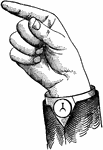
Top-Glide
Glides are only transitional sounds. They are intermediate to Consonants and Vowels, combining the characteristics…

Top Mixed-Glide
Glides are only transitional sounds. They are intermediate to Consonants and Vowels, combining the characteristics…
![Glides are only transitional sounds. They are intermediate to Consonants and Vowels, combining the characteristics of certain central-aperature consonants with the wide or expanded quality of vowels, but differing from vowels in not having a fixed configuration. ...in representing glides the peculiarities of consonants and vowels are blended: the accented fingers, by being straightened, contribute a consonant characteristic; while the second phalanx of the thumb, by being held at an angle to the plane of the palm, imparts to the glide positions the wide, without giving them the firm, quality of vowel positions. Voice-Glide – Vowel murmur [a non-syllabic effect of the mid Mixed primary round vowel]. It is a Throat formation, and is shown to be so by the position which represents it.](https://etc.usf.edu/clipart/65900/65915/65915_glide_voice_mth.gif)
Voice-Glide
Glides are only transitional sounds. They are intermediate to Consonants and Vowels, combining the characteristics…

Glove of Oliver Cromwell
This illustration shows the glove of Oliver Cromwell, a 17th century English military and political…





